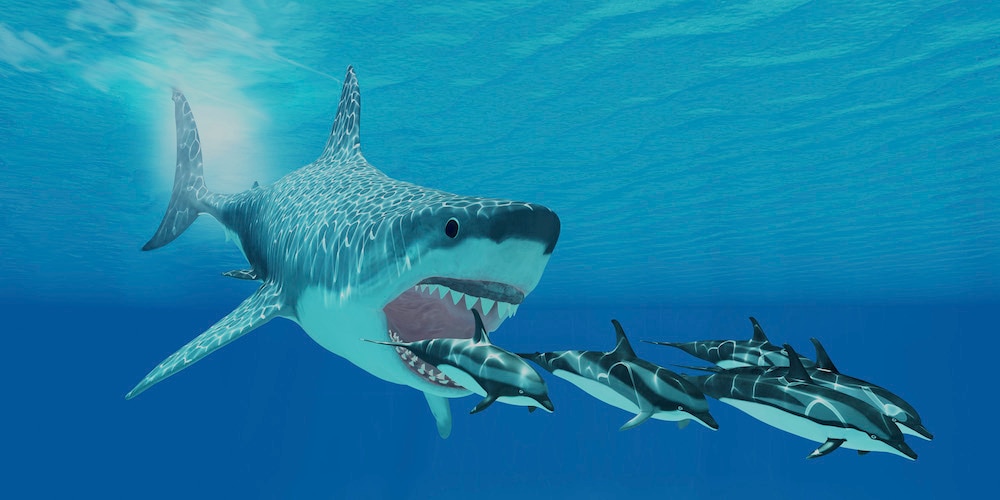Create a free profile to get unlimited access to exclusive videos, sweepstakes, and more!
Megalodon could have eaten a killer whale whole
There's always a bigger fish.

The prospect of a great white shark hunting in the shallow waters of New England was enough to propel Peter Benchley’s novel, Jaws, and Steven Spielberg’s subsequent film adaptation to blockbuster success. The great white was chosen as the literary and cinematic terror of the deep because it is the biggest shark we have on offer, but not so long ago in Earth’s history, there was something much bigger.
The megalodon is believed to have been the largest shark to ever have lived, coming in at nearly three times the length of a great white. Estimates of its size, however, are largely inferred from the size of its teeth, in lieu of any complete fossils. Because sharks are largely comprised of soft tissues, they don’t fossilize well, but their teeth are abundant. Like other sharks, megalodon would have replaced its teeth continuously throughout its life, leaving the seafloor practically littered with hand-sized prehistoric chompers.
Traditionally, scientists have taken those teeth and compared them with living animals like the great white and other sharks to get estimates of the meg’s overall size. Those estimates hinge on a lot of assumptions, namely that the rest of a megalodon’s morphology matched that of modern sharks and can be extrapolated. That’s about the best we can do without more complete remains.
Recently though, scientists have been able to update their models thanks to an unusually well-preserved vertebral column. An international team of scientists got hold of some fossilized megalodon vertebrae, which were shockingly discovered way back in 1860, and used them to construct a more complete model of an individual megalodon which lived during the Miocene, some time between 18 and 46 million years ago. Their results were published in the journal Science Advances.
Researchers measured and scanned each of the preserved vertebrae and used that data to reconstruct the complete vertebral column in a computer model. From there, they attached it to a comparably sized megalodon jaw, resulting in a more or less complete skeletal structure. Finally, they used the morphology of living South African great whites to fill in the gaps and add flesh around the skeleton.
The result was a digital representation of an animal which would have come in at 16 meters long. The estimated weight was in excess of 61 tons — more than 120,000 pounds — and a stomach volume of 10,000 liters. That’s more than 26,000 gallons, roughly enough to fill in a 12-foot round, above-ground pool to about four feet high. If the megalodon still existed, it could not only swallow you whole, but you could comfortably swim around inside its stomach while you waited to be digested.
If a megalodon did a eat a person, it would be left wanting. The team estimated it would have been large enough to comfortably hunt and consume prey animals up to eight meters in length, whole. That’s roughly the size of modern killer whales, themselves apex predators.
Metabolic estimates suggest a megalodon would have required roughly 98,000 calories per day to keep its massive murder machine of a body going. Those high energy demands might have been met by feeding on the energy-rich blubber of whales, something the math suggests they could easily have done. In fact, megalodon bite marks on the remains of fossilized whales support the idea that it was probably a common event.
Once a megalodon captured a killer whale, or something of comparable size, it could have sustained itself for the next two months while it patrolled the open ocean in search of its next meal. Megalodon would have had plenty of opportunity to gorge itself on unlucky killer whales. The fossil record tells us that killer whales emerged about 11 million years ago while megalodons didn’t go extinct until 2.6 million years ago. On the scale of the entire Earth’s history, we just missed witnessing one of the most epic aquatic battles of all time. Maybe that’s for the best. Making Jaws was hard enough without having to wrangle a shark robot three times as large.


























